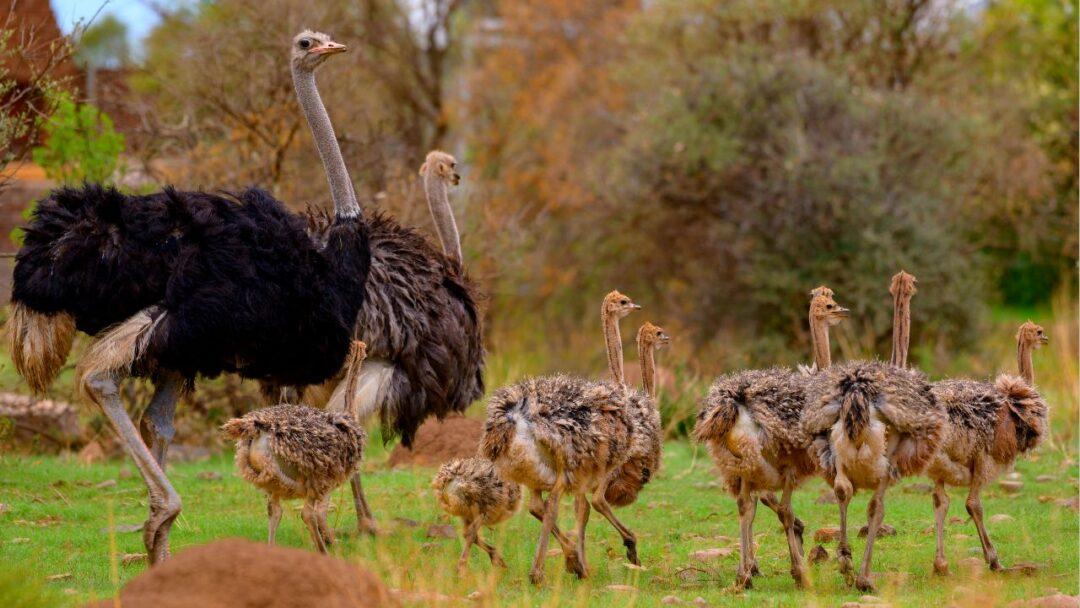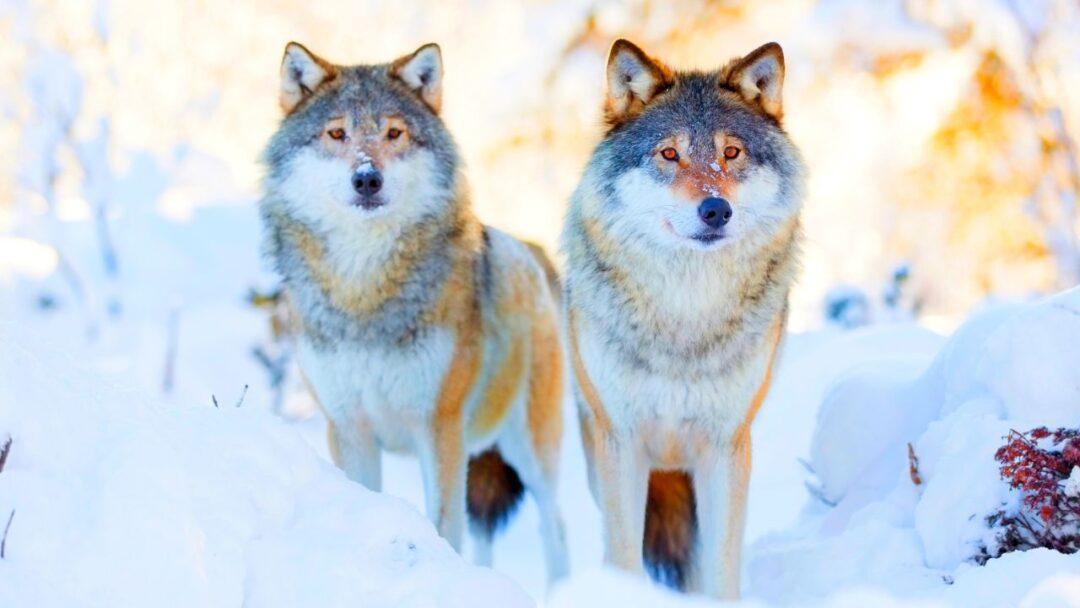Table of Contents

Introduction
The Ostrich is a one-of-a-kind African bird. They are the world’s largest bird and have numerous intriguing features and behaviors that distinguish them from other species. In this post, we’ll look at ten amazing facts about ostriches, including some mysterious facts, myths, and their ecological relevance.
10 Interesting Facts About Ostriches
- Ostriches are the largest bird in the world: Ostriches can reach up to 9 feet in height and weigh up to 320 pounds, making them the largest bird in the world.
- Ostriches are flightless birds: Unlike most birds, ostriches cannot fly. They have strong legs and are capable of running up to 43 miles per hour.
- Ostriches have a unique digestive system: Ostriches have a unique digestive system that allows them to extract maximum nutrition from the food they eat. They have a gizzard that grinds up food, and their food is fermented in their crop before moving on to the stomach.
- Ostriches are omnivores: Ostriches feed on a variety of foods, including plants, insects, and small animals.
- Ostriches have two toes: Ostriches have only two toes, unlike most birds which have three or four.
- Ostriches have the largest eyes of any land animal: Ostriches have eyes that are two inches in diameter, which is the largest of any land animal.
- Ostriches have three species: There are three species of ostriches: the common ostrich, the Somali ostrich, and the Masai ostrich.
- Ostriches have a lifespan of up to 50 years: Ostriches can live for up to 50 years in captivity, and up to 30 years in the wild.
- Ostriches have a unique social structure: Ostriches live in groups called flocks, which are made up of a dominant male and several females.
- Ostriches have a unique mating ritual: During mating season, the male ostrich will perform a courtship dance, which involves shaking his wings and tail feathers while making loud noises.
Mysterious Facts and Myths
Ostriches have long been linked to legends and riddles. Here are some intriguing ostrich facts and myths:
- Ostrich eggs are said to have healing powers in various cultures and are utilized in traditional medicine.
- It is a widely held belief that ostriches bury their heads in the sand. To avoid predators, they may lie down with their necks spread out flat on the ground rather than burying their heads.
- It’s also a fallacy that ostriches can outrun horses. They are extremely quick runners, yet they cannot outrun a horse.
Importance to Ecosystem
Ostriches are vital members of the environment. They manage insect populations by eating them, and their feces fertilizes the soil. Predators such as lions, hyenas, and cheetahs rely heavily on ostriches for sustenance.
What is the average lifespan of an ostrich?
Ostriches have an average lifespan of about 40 to 45 years in the wild. However, when raised in captivity under optimal conditions, they can live up to 60 years.
How fast can ostriches run?
Ostriches are renowned for their incredible speed. They can reach speeds of up to 60 miles per hour (97 kilometers per hour), making them the fastest land bird in the world.
Do ostriches really bury their heads in the sand?
No, the widely held belief that ostriches bury their heads in the sand is a myth. When threatened, ostriches may lie flat on the ground with their necks stretched out, giving the appearance of burying their heads. This behavior allows them to blend in with their surroundings and camouflage.
Are ostriches capable of flying?
Unlike most birds, ostriches are flightless. Although they have wings, their bodies are too heavy and their wingspan is not large enough to generate sufficient lift for flight. However, their strong legs allow them to run swiftly across vast distances.
How big are ostrich eggs?
Ostrich eggs are the largest of any bird species’ eggs. They typically weigh 3 to 4 pounds (1.4 to 1.8 kilograms) and have the volume of 24 chicken eggs. The thick, sturdy shells of these massive eggs protect the developing chicks.
What do ostriches eat?
Ostriches are omnivorous birds that eat mostly plant matter. Grass, leaves, seeds, flowers, and fruits make up their diet. On occasion, they may also consume insects, lizards, and small rodents.
How do ostriches defend themselves?
When threatened, ostriches employ a variety of defensive strategies. Their primary line of defense is their long, powerful legs armed with sharp claws. They can deliver powerful kicks that can deter or injure predators. Ostriches also have excellent eyesight and hearing, allowing them to detect and avoid danger from a distance.
Do ostriches live in groups?
Ostriches do, in fact, live in small groups known as flocks. A dominant male, several females, and their offspring make up these flocks. The male ostrich protects the group, while the females incubate the eggs and share the responsibility of rearing the young.
Are ostriches endangered?
No, ostriches are not listed as endangered. The International Union for Conservation of Nature (IUCN) classifies them as a “Least Concern” species. Specific ostrich populations in specific regions, on the other hand, may face localized threats and conservation concerns.
Conclusion
Ostriches are unusual birds with many fascinating characteristics and behaviors. They are the world’s largest bird, are flightless, and have an unusual digestive system. Ostriches contribute to the ecosystem by controlling bug populations and providing food for predators.
10 Fascinating Facts About Skunks : NEXT POST




